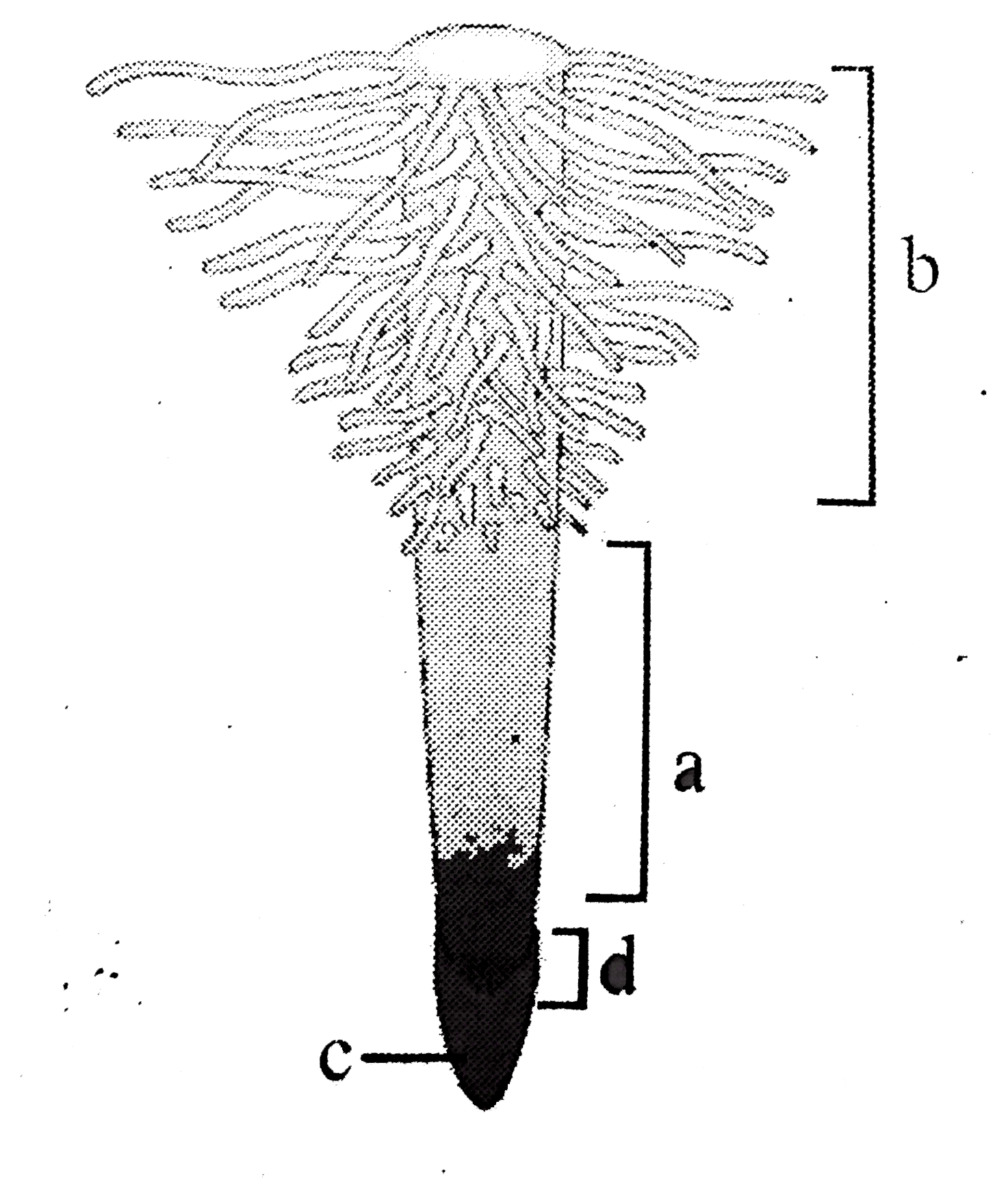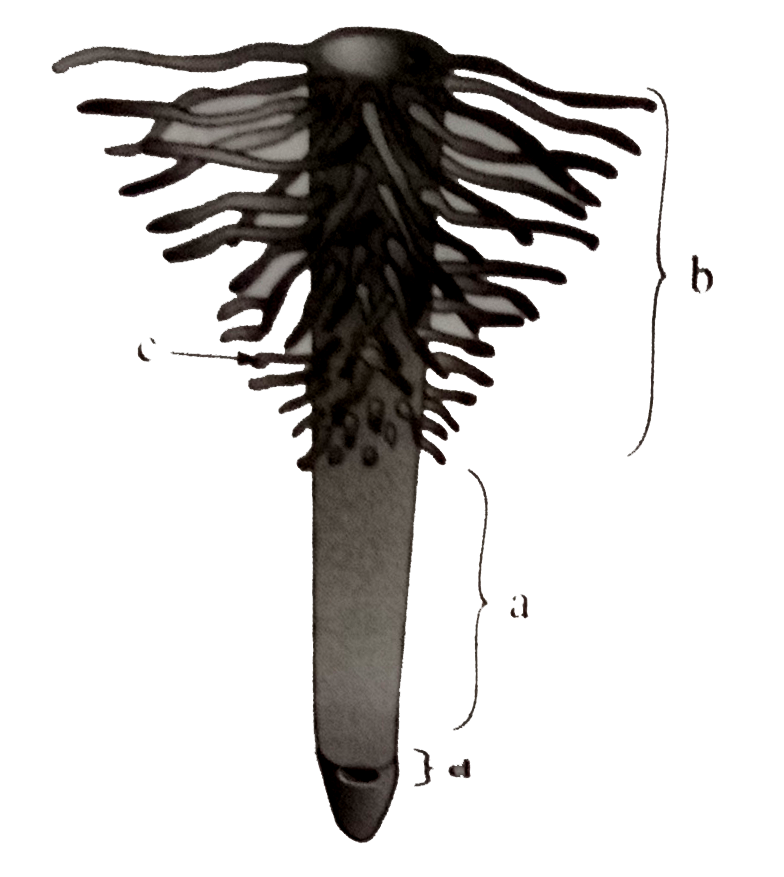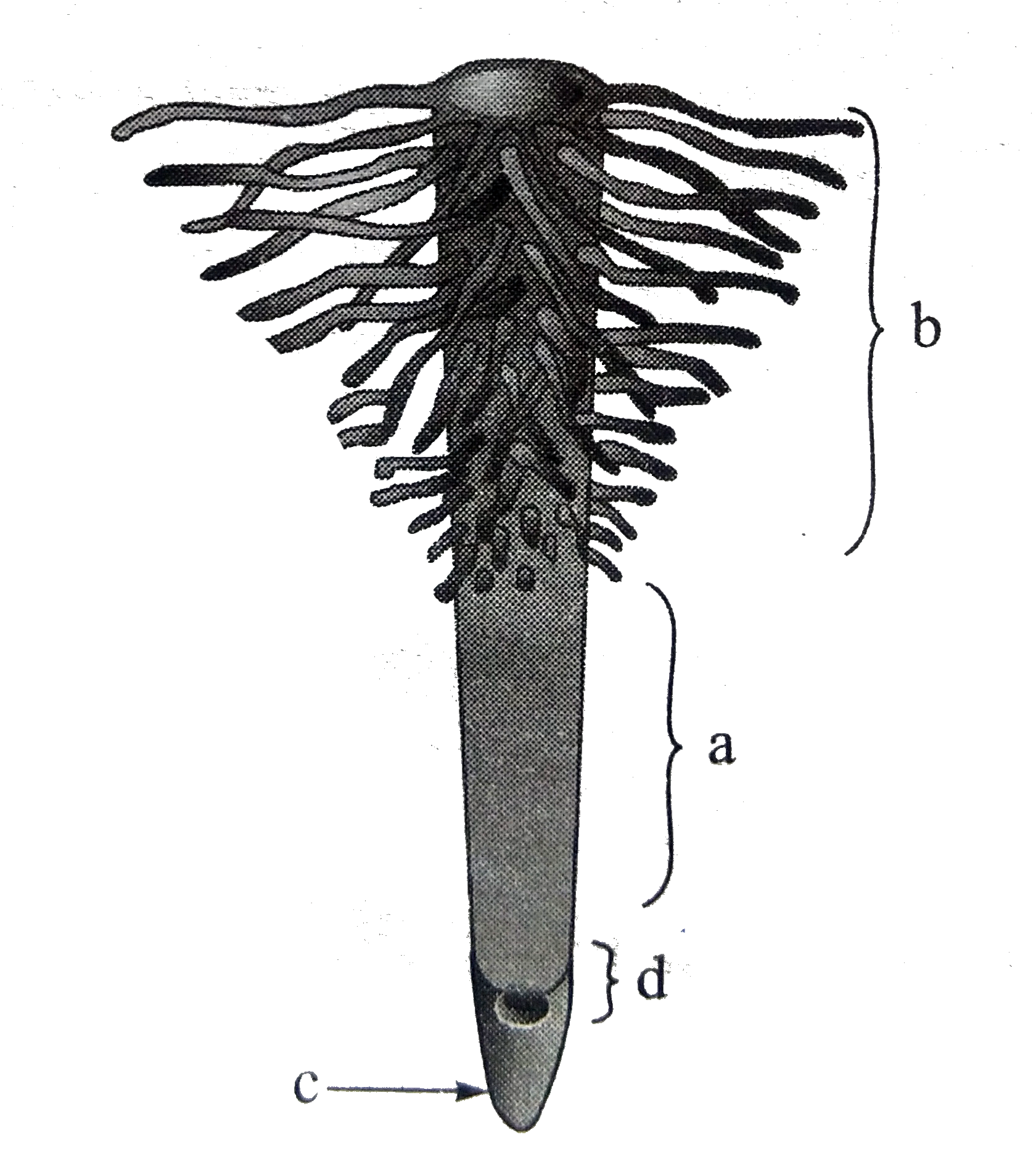Describe the different regions of a root.
A typical root has five regions-root cap, growing point, zone of elongation, root hair zone and zone of mature cells.
1. Root Cap. It is a multicellular cap like covering found at the tip of the root. It produces mucilage for lubrication of path of root into the soil. Root cap protects the growing point against friction of soil particles. Root cap cells are short lived. New cells are being formed continuously by the calyptorgen or growing point. Root cap perceives the force of gravity i.e. why its cells contain starch grains.
2. Growing Point. It is about Imm in length. Growing point is also called meristematic zone because its cells have the power of division. New cells are added by it to root cap.

3. Zone of Elongation. It lies behind the growing point. The cells of this zone are newly formed which elongate rapidly. The zone occupies about 5 mm of the root. Elongation occurs by (i) Loosening of cellulose fibres (ii) Addition of wall material into cell wall. (iii) By fusion of sap vacuoles.
4. Root Hair Zone (Zone of Differentiation). Various primary tissues differentiate in this part. Some of the outer cells give rise to root hairs. Root hairs are meant for absorption of water and mineral salts from the interspaces of the soil. Root hairs are, however, not permanent. They shrivel after some time. New root hairs are continuously formed in the older part of the zone of elongation. Root hair zone occupies about 1 to 6 cm of the root. Root hair zone is differentiated into cortex, endodermis, pericycle etc.
5. Zone of Mature Cells. This constitutes the bulk of the root except for the apical 1 to 6 cm. The cells have become permanent in this region. However, lateral root and secondary thickening can occur. The lateral roots arise by endogenous origin.
Similar Questions
Recognise the different region in the root section:-

(i) Root cap
(ii) Region of meristematic activity
(iii) Region of elongation
(iv) Region of maturationView Solution
Recognize the different region in the root section.
I Root hair activity
ii. Region of meristematic
iii. Region of elongation
iv. Region of maturation.View SolutionRecognise the different region in the root section

i. Root cap
ii. Region of meristematic activity
iii. Region of elongation
iv. Region of maturationView SolutionRecognize the different region in root section .
 View Solution
View SolutionDescribe different modifications of tap root system.
View SolutionRegions Of The Root
View SolutionGiven below are the features of regions of the root
 View Solution
View SolutionGiven below are the features of regions of the root
 View Solution
View SolutionDescribe the importance of regional political parties in strengthening democracy
View SolutionDescribe main functions of roots.
View Solution

